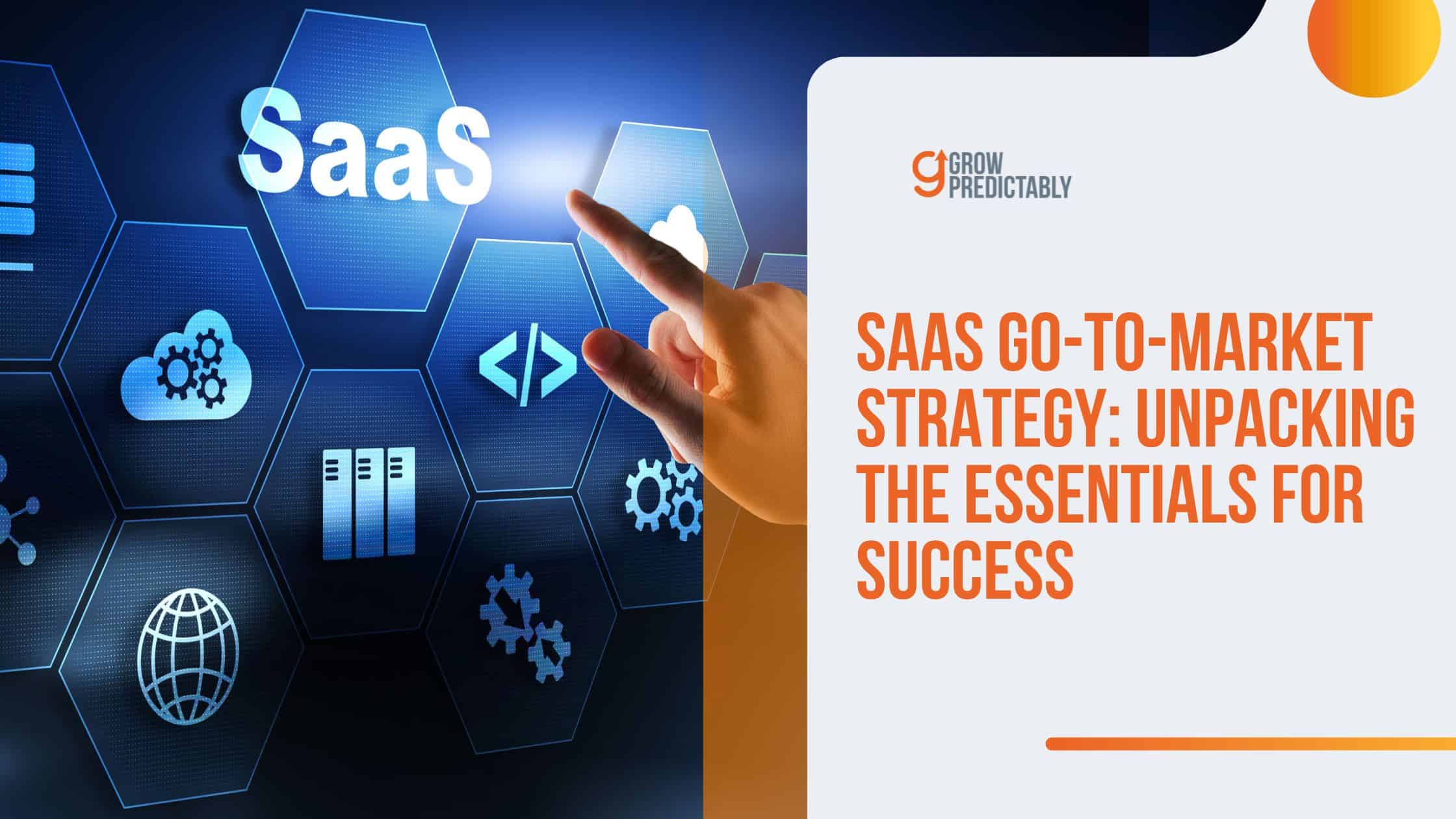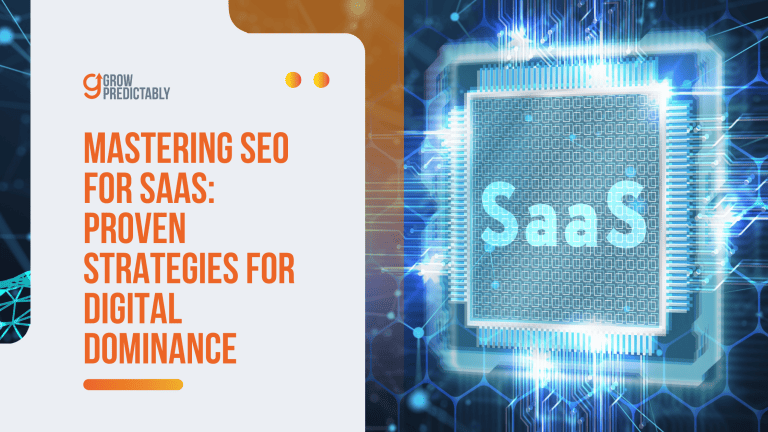SaaS Go-To-Market Strategy: Unpacking the Essentials for Success
Let’s be honest.
Most startups don’t fail because their ideas suck.
They fail because they rush into launching without a solid plan.
Are you about to do the same with your awesome product?
Get this – 90% of startups don’t even see their first anniversary!
And way too often, it’s because they totally messed up how they got their product out there.
So, here’s the deal: I will help you nail this.
We’ll figure out who your perfect customers are, how to make them see why they NEED what you’ve built, and how to price it right.
This isn’t some boring theory – these are the steps that’ll actually make your SaaS take off.
This isn’t just another blog post.
It’s your survival guide.
Stick with me, and let’s ensure your SaaS isn’t just another statistic!
Understanding Go-to-Market Strategy
Okay, let’s talk about launching your new SaaS product or entering a new market.
There’s something you absolutely need to nail down: your Go-to-Market (GTM) strategy.
Think of your GTM strategy as your roadmap for success.
It’s the step-by-step plan to introduce yourself to the world and excite customers.
This covers everything from the very beginning to the way after the sale is made!
People often mix up GTM strategies with marketing strategies.
Here’s how to tell the difference:
- GTM Strategy: This is the big picture. It answers the important “why” and “who” questions: Why is your product awesome? Who desperately needs it? How will you sell it and keep customers happy afterward?
- Marketing Strategy: This is all about getting the word out. How will you build excitement, snag those leads, and make your target audience fall in love with your brand?
See the difference?
Your GTM strategy is the foundation—it ensures that your marketing reaches the right people with the right message and that the whole business is aligned to make your product a success.
5 Steps to Make a Winning SaaS Go-to-Market Strategy
The SaaS industry is crazy competitive.
To stand out, you need a killer go-to-market strategy (GTM).

Here’s a breakdown of how to make one that sets you up for success:
Step 1: Pinpoint Your Growth Strategy
First things first, how do you want to grow?
This is where you need to get super specific about your ideal customers.
- Get into their heads: What are their major problems? What keeps them up at night? You can use surveys, online communities, or even just chat with potential customers.
- Data is your friend: Analyze the info you have on customers; it’ll help you target the ones who are the perfect fit.
- Don’t forget the big picture: Check out industry trends to make sure your ideal customer makes sense in the overall market.
When it comes to SaaS, real growth is all about getting your hands dirty and understanding your customers’ pain points.
I’ve learned this the hard way – talking to users, hearing their frustrations, and finding those little nuggets of insight that change everything. You gotta balance hard data with that gut feeling you get when something just clicks.
See, you’re not just pushing software.
You’re selling them a way to make their lives easier, to solve a problem. That means your solution has to fit seamlessly into their world.
Step 2: Define Your Value Proposition
Why should someone buy your product and not someone else’s?
Figure out what makes you stand out – is it unique features, awesome pricing, or something else?
- Think of the whole customer journey: How does your product help at each stage, from when they first hear about you to when they become loyal users?
- Get feedback: Ask customers what they value most, and ensure it’s reflected in how you talk about your product.
Step 3: Study Your Competition
Don’t copy them, but figure out what your competitors are doing.
This helps you find what makes YOU different.
- Tools are helpful: There are tons of online tools to analyze the competition. See what they’re good at, what they’re missing, and how their customers feel about them.
- Find the gaps: Can you serve a type of customer your competitor is ignoring? This is your chance to stand out.
Step 4: Develop Your Market Niche
Trying to sell to everyone is a recipe for a headache.
Instead, find a niche – a specific group that your product is especially perfect for.
- Your ideal customer is your guide: The details you gathered about them earlier will lead you to your niche.
- Tailor everything: Adjust your development, your marketing, and literally every part of your business to make your niche feel like you built it just for them.
Using the Customer Avatar Canvas helped me get a clearer view of my market niche by profiling my ideal customer. This includes their demographics, psychographics, pain points, behavior patterns, goals, and aspirations.
The ‘Before/After’ step shows how my product transforms their experience.
By understanding these aspects, you can create targeted content, improve your products, and craft effective marketing strategies. Marketers can benefit from better engagement and conversions by knowing their audience well through customer avatars.
Step 5: Consider Your Product as a Methodology
Don’t just list a bunch of features.
Instead, show customers how your product will make their lives better.
- Focus on customer outcomes: Does your product save time? Increase profits? Make work easier? You need to highlight these.
- Talk their language: Use the same words your customers use to describe their problems.
Pricing Strategies and Models for a Competitive SaaS Offering
So, what exactly is a pricing model?
Think of it like this: a pricing model is just how you decide what to charge for your product or service.
It’s the way you package your prices so customers understand what they’re getting.
Especially if you’re in the software-as-a-service (SaaS) game, here’s a breakdown of some common pricing models to consider:
- Subscription-Based Pricing: The classic “Netflix” model. Customers pay a set amount every month or year. It’s predictable for you, reliable for them – everyone wins!
- Freemium: Give the people a taste! You offer a basic version for free, then charge for those extra bells and whistles only the power users need. Smart way to build a user base.
- Usage-Based Pricing: “Pay for what you use.” If your customer uses your service a ton, they pay more. If they just dabble, they pay less. Think of services like your cloud storage provider.
- Tiered Pricing: Different packages for different needs. A basic package for small teams, an advanced one for the big guys… you get the idea.
- Per-User Pricing: Simple. One user = one price. Great for things like productivity tools for teams.
- Per-Feature Pricing: It’s like a pricing buffet – customers pick and choose the features they need, and that’s what they pay for.
- Flat Rate: One price, that’s it! Super easy to understand, but might not be the best fit for everyone.
- Hybrid Models: Mix and match! Sometimes, combining different models gives you the most flexibility and lets you capture a wider range of customers.
Remember, a pricing model isn’t your entire strategy.
That larger strategy is how you use pricing to reach your business goals.
You’ll think about things like:
- Cost-Plus Pricing: Basic markup over your costs. Easy, but might not bring in the most profit.
- Competitor-Based Pricing: Keeping an eye on what your rivals are doing. It works, but watch out for price wars!
- Value-Based Pricing: Powerful stuff, especially in SaaS. How much value does your customer really get out of your product or service? Price it accordingly!
Optimizing and Evolving Your SaaS Go-to-Market Strategy
Well, you can’t just wing it with your go-to-market (GTM) strategy.
You have to have a plan, but you must also be ready to tweak it, improve it, and level it up constantly.
Innovation needs to be part of your culture. Customers are transforming faster than we are, and if we don’t catch up, we’re in trouble.
Ian Schafer
Here’s the thing: how do you know if your strategy is actually working?
Metrics!
Here’s a quick hit list of the vital numbers you should be tracking:
- Customer Acquisition Cost (CAC): How much does it cost you, on average, to bring in a new customer? The goal is to keep this number as low as possible. Think of it like fishing – you don’t want to spend a fortune on bait for every single fish.
- Monthly Recurring Revenue (MRR): This is your bread and butter – the money coming in every month. You want this number to keep growing steadily!
- Customer Lifetime Value (CLV): How much money will a customer likely bring in over their entire time with you? For a healthy business, this number should be WAY higher than your CAC.
- Churn Rate: Bummer – this measures how many customers are jumping ship. Keep this as low as possible! A high churn rate means something isn’t quite right with your product or service.
- Sales Conversion Rates: How good is your sales team at actually closing deals? Track how many leads turn into paying customers at each stage of your process to find the bottlenecks.
These numbers aren’t just for show.
They tell you a story about your business and what’s working (or not).
The key is to analyze these metrics and adjust your GTM strategy based on what you find.
Adapting Your Strategy Based on Market Feedback

The software world moves fast.
If you’re too stuck in your ways, you will get left behind.
The key to success is listening to what the market tells you and adapting your strategy to match.
- Listen to your customers: Surveys, forums, talking to them directly… these are gold mines! What do your customers love? What drives them crazy? Fix the pain points, double down on what they love, and you’ll make them stick around longer.
- Keep an eye on the competition: See what those other guys are doing. Are they launching a cool new feature that’s getting attention? Did they shift their pricing in a way that might steal your customers? It’s not about copying but staying aware of how the game is changing.
- Let the numbers talk: Don’t just change things for the sake of it. Track your metrics! Is a new feature actually getting used? Did tweaking your pricing actually boost sales? Data will tell you if the changes you made worked or if it’s time to try something else.
- Stay agile: Think of your strategy as a living thing that needs to keep evolving. Small tweaks, quick tests, and always getting feedback – that’s how you stay ahead of the curve.
SaaS Go-To-Market Strategy Examples
Okay, we get the basics of go-to-market strategy, but what does it look like in action?
Let’s break down three companies that did it right, and see what we can learn:
Case Study 1: Dropbox – The Power of Going Viral
- The Strategy: Dropbox gave users extra storage space if they referred a friend. Both the referrer and the new person got a bonus. Simple? Yes. Effective? Oh yeah, it fueled crazy growth.
- Why it Worked: This wasn’t some random giveaway. More storage = more use of Dropbox, which reinforced why people needed it in the first place. Plus, they tapped into existing social networks – free advertising!
- Takeaways:
- Make any sharing or referral system super easy – don’t make users jump through hoops.
- If you can tie your incentive directly to how people use your product, that’s gold.
- Viral growth can seriously cut down on how much you spend to get new customers.
Case Study 2: HubSpot – Content is King
- The Strategy: HubSpot became the go-to source for everything about inbound marketing. Blogs, ebooks, templates… they gave away tons of actually useful stuff for free, building a huge audience.
- Why it Worked: They didn’t just churn out content, they made it GOOD. They became the experts, so people trusted them. This wasn’t just getting leads, it was nurturing them into customers.
- Takeaways:
- Quality over quantity, always.
- This is a slow burn, not a quick fix. But those results build over time.
- Think about what your customers need at every stage, and give them content to match.
Case Study 3: Slack – When Your Product Sells Itself
- The Strategy: Slack focused on making a communication tool people actually wanted to use. It spread like wildfire inside companies because teams adopted it, and then the whole organization followed.
- Why it Worked: They nailed the user experience. Plus, the way Slack works is collaborative, so users basically did the marketing for them by inviting their teams in.
- Takeaways:
- If people love your product, they’ll become your best promoters.
- Make it dead-simple to invite and add new users.
- Track like crazy how people use the product, so you can keep making it better.
Key Takeaway
A solid go-to-market strategy is the difference between your SaaS product taking off or totally flopping.
This blog post basically gave you a roadmap for making sure things go right: finding the best opportunities, figuring out what makes you special, keeping tabs on the competition, and nailing down the perfect price point.
But here’s the thing: launching a product is just the beginning. You’ve got to keep an eye on how things are actually performing.
That means tracking stuff like how much it costs to get new customers, what your monthly revenue looks like, how long those customers stick around, and how often you’re actually closing sales.
This is what tells you if your strategy is working or if you need to make adjustments.
Think of this blog as a starting point, not the final word. Use what you learned, get out there, and see what happens!
And hey, we’ve got a ton of other blogs about digital marketing, business smarts, and that whole entrepreneurial mindset thing – check those out for even more tips on crushing it!








